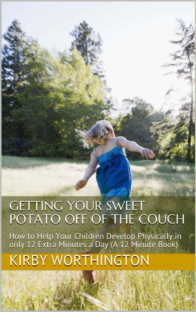Freedom To Change: What helps in changing a behavior?
Courage to change comes from grace not from shame.
There is a type of guilt that can be healthy. It is there when you learn right from wrong, what is helpful versus what is hurtful. The healthy type of guilt says, “What I chose to do hurt someone. I want to choose to help people, to be kind and loving. I don’t want to hurt people.” This is saying what I DID was wrong. This implies that change is possible, because I can change what I DO.
Shame is different. Shame wounds, drawing energy away from someone. It says, “Who I AM is wrong.” This implies that change is not possible, because if this is who I am as a person, I cannot change that. Shame does not have healing capabilities. It deflates a person like a prick in a balloon, slowly releasing the air from inside it. (For more on this see our previous post here.)
If a person learns that what they DID was wrong, then they can choose to DO better next time and learn from their mistakes. But what effect would it have on them if they start thinking that who they ARE is simply wrong? We don’t ever want to make a child feel like they cannot change. Instead, we want them to know that change is possible, and we as their parents are there to help. Our job is to help our children learn from their mistakes (and from our mistakes!). Children can blossom if their mistakes and wrong choices are treated kindly, with love and understanding, and as choices that can change.
One way of putting this into practice is a type of correction that seeks to teach rather than shame:
“The Practice Game”
This is best explained by simply giving you a scenario in which it would be used. A child has written on a wall. (So rare an occurrence, huh?!) Response: make a place in the house where there are art supplies and they are allowed to draw. (With some children, it may be necessary to keep some things out of reach so that they must ask you to use them each time until they show they can use them appropriately.) Then take the child to the place where they drew inappropriately and say: “No drawing on walls. If you feel like drawing, let’s go to the art area.” As you hold hands, run rambunctiously together – make it fun! – to show them the art area made precisely to fulfill their creative urges. Then go to another room and ask: “If you feel like drawing what do you do? Draw on the walls? No. You go to the art area…” – and run there again!
This process may need to be repeated. (That is, the child may not “get it” after just one time. They may draw on a wall again.) But here’s the main thing: practice the replacement behavior. They can help clean up the mess they made, but if that part is too fun it may just encourage them to do it again. Make it fun to run to the good alternative.
This game can be applied to many different things. (In fact, the idea came from a season when Kirby was reading a book on “potty training in less than a day”.) And did you see what the game did for the child? It focused on the child’s bad choice as just that – a choice. And it gave an alternative choice. It did not shame them into thinking that they are a bad child because they made the bad choice; it helped them focus on and change their bad choice and even made it fun to change and make the good choice.
We experience shame in different ways such as facial expression, tone of voice, or the very words that are used. This may even come from someone who is not intending to shame us. The Disney film “Meet the Robinsons” has some characters who deal with shame or embarrassment as children and go in different directions as a result. The main character, Cornelius, was shamed for failing in numerous inventions and began to take it as WHO he was as an inventor, a failure. He began to believe that his failures defined his identity, and he started to quit trying. His roommate growing up, Mike or “Goob”, was shamed for what he did and responded by seeking revenge. Shame did not help either of them. (Cornelius began inventing again when he learned that failing at some (even many) inventions did not define him as a failure, and that failures can actually be learning opportunities for successful inventors who keep moving forward.)
As each child is individual in their perceptions, those on the more sensitive end of the spectrum may especially need to hear: “What you DID was wrong, but I will always love YOU.” Expressing your love cannot be said too much. And remember, repetition helps this sink in over time. Over and over let your love, not shame, affect your child’s sense of identity, even while you help them learn to change bad choices into good ones.
Photo Credit: carrasco.javi cc
Related Posts
By accepting you will be accessing a service provided by a third-party external to https://mail.growthandgiggles.com/


